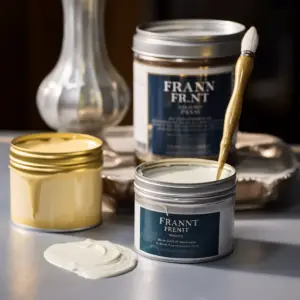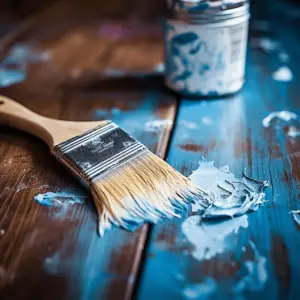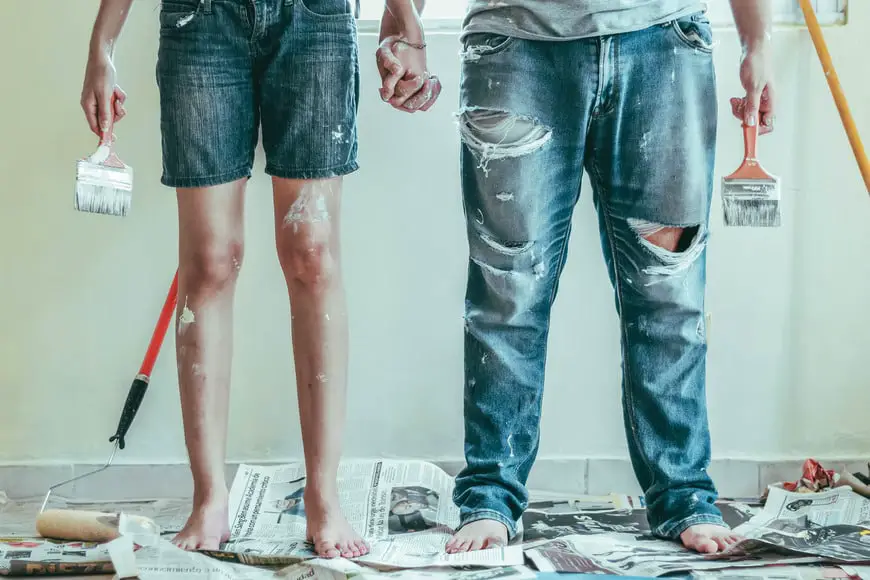Painting is a fairly easy job to do and is possibly the cheapest way to update a space. That said, it is only easy if you know exactly what you are doing and while it may be a pocket-friendly way to spruce up your space, it need not appear so.
Despite your best efforts though, your paint job may go awry and the end product may fail to satisfy you aesthetically. You may end up with an uneven sheen. The majority may not even notice this but for the clinically observant, this is deeply unsettling and needs fixing pronto!
An uneven paint sheen is in its most technical way, an error in the paint job itself. A step in the procedure of painting that was not executed as well as it should have. In fact, most probably, more than one error will lead to this kind of end result.
Fixing uneven paint sheen may involve redoing the entire project from scratch or it could be as simple as applying an ancillary coat of the paint over the finished job to conceal the uneven sheen.
Regardless of what will work, if you can identify the cause, you may be able to fix it the right way.
Sheen is part of the paint and provides the finish so if the sheen is uneven then more than likely the paint coats may also be uneven. Below are the causes of uneven paint sheen.
Table of Contents
How to Fix Uneven Paint Sheen: Step by Step Guide

If the problem is only at the point of the painting, here is what you can do.
- Apply one more coat of paint
- Paint from the bottom upwards, and ensure you maintain a wet edge to eliminate lapping.
- Let the paint cure under uniform temperature and humidity.
If this does not work, you may have to do more;
- Sand down the uneven surface and eliminate all the dust.
- Using a roller, apply the first coat of paint evenly and let it dry. Use the technique mentioned above to ensure you have no unevenness.
- Do the same for a second coat.
- Use high-quality water-based paint to achieve superior sheen evenness.
What Causes Uneven Paint Sheen?
Uneven paint sheen is also called ‘flashing’ and refers to the presence of dull or bright spots on a paint job creating an uneven appearance. The causes include:
- A porous surface underneath or a surface with uneven porosity
- A poorly primed or unsealed substrate
- Lapping, which is caused by failure to maintain a ‘wet edge’
- Uneven spread rate or coverage
- Applying only one coat
- Atmospheric conditions changing drastically while the paint is curing
- Touch-ups on painted surfaces without adequate preparation
- Interrupting the paint job or changing tools
How to Prevent Uneven Paint Sheen
- Prepare the surface adequately.
- Ensure you sand down the substrate thoroughly and rid the surface of dust using a vacuum cleaner. To be on the safe side wipe off any remaining dust using a soft brush or a dry cloth.
- For porous and absorbent surfaces, you may have to use a separate primer instead of relying on self-priming paints.
- Allow the primer to cure fully.
- Use sealant or the recommended base coat for your paint to create an even smoother base for paint to adhere to.
- Prepare the paint by making sure it is thoroughly mixed and shaken in order to achieve an even consistency of the paint.
- It should not be too thin and runny or too thick.
- Apply the first coat uniformly. As you paint, ensure you maintain a ‘wet edge’ to avoid lapping which is the most common cause of uneven paint sheen.
- According to the manufacturers’ instructions, apply another coat or two more coats after the previous one has sufficiently dried or cured.
- Your paint job should be even and satisfactory at this point.
Additional pointers
Lapping is the appearance of roller strokes where dry areas overlap with wet areas. This is prevented by making sure you constantly maintain a ‘wet edge’.
A wet edge is maintained by painting from the wet areas towards the dry area such that subsequent strokes are applied over half of the previous stroke before it has begun to dry while the rest of the roller applies paint over a ‘dry’ area.
- Finish the paint job fully without taking breaks or allowing interruptions that will force you to apply wet paint on fairly dried paint creating uneven portions in your paint job.
- Do not mix instruments. For instance, if you start the paint job using a roller, finish using the roller. Do not use a paintbrush alongside the roller since the two will create different strokes and this difference will show once the paint dries up.
- Do not paint during volatile weather conditions. If it is too hot and dry when you start the paint job and humid as you approach the middle of your work the air conditions will affect the behavior of the paint, particularly with regard to curing and this will create different effects on different surfaces. In areas where the weather can change drastically within a day, ensure you pick a season that is fairly stable or that you cordon off the room and control the temperature and humidity using your air conditioning during the entire painting and curing process no matter how long.
Additional pointers

- Follow the manufacturers’ instructions to the letter, especially when mixing paint.
- Thin runny paint is difficult to control. it will also cure too fast which makes lapping occur easily.
- When the paint is too thick it is difficult to push evenly. It does not collect evenly on the roller either. This introduces a number of issues including uneven coverage and thickness, possible clumps forming on the paint, not to mention that thick paint is wasteful since more coats require even more paint.
- Purchase the product designed for the job. An uneven sheen may be the byproduct of low-quality paint or paint designed for a completely different surface from the substrate you have. Get the best fit for your paint job.


